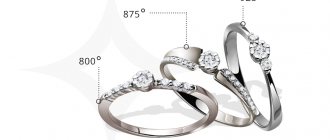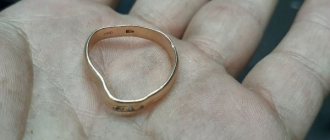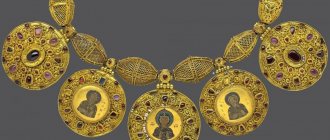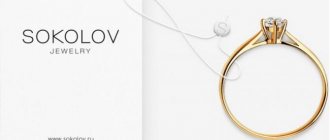Delicate cameos appear every now and then in the collections of fashion designers. True, not everyone knows how to correctly combine such an accessory in their image, and therefore prefer to admire the cameos from the outside. But this is completely in vain, because an unusual piece of jewelry can become the real star of an image and transform a woman’s appearance from ordinary to unusual and memorable.
Gemma, cameo or intaglio?
First you need to understand the terminology. What is the difference between gemma, intaglio and cameo? Gemma is a carved decoration made from a jewelry stone or shell. To create such a decoration, either a stone of the same color or a stone with a vein can be used - then the light of the image and the background will be different. Intaglio and cameo are types of gems. We call a piece of jewelry an intaglio if the design on the gem is incised, and a cameo if it is convex. Cameos are the most popular. Of course, it is not at all necessary to buy a product made of precious stone; you can use jewelry made of high-quality plastic.
Famous artists - cameo makers
The names of most of the ancient masters who created unique cameos are irretrievably lost to posterity. Fortunately, information about a small number of noteworthy artists remains available to a wide range of art lovers. Among them:
- Tommaso Saulini is the most famous cameo artist of the 19th century. Even the Queen of England and members of the Russian royal family were his customers. Saulini's masterpieces today cost a lot of money, and numerous imitators unsuccessfully try to fake them in order to earn a decent fortune on the master's name.
- Luigi Saulini is the son and successor of Tommaso. Together with his father, he was an ardent popularizer of the cameo and took part in numerous Universal exhibitions. Luigi spent many years honing his skills to reach the level of ancient artists and he succeeded.
- Giovanni Noto is the most famous cameo artist of the 20th century, nicknamed the “Michelangelo of the chisel.” For many years, Noto created unique masterpieces commissioned by the Italian government, which became official gifts to important foreign persons. The great master founded his own school at the jewelry workshop in Torre del Greco and generously shared his knowledge with his students.
On the Very Important Lot portal, anyone can purchase unique antique masterpieces at online art auctions. Our site also provides everyone with a unique opportunity to buy paintings, graphics, antique and modern handmade cameos directly from contemporary painters.
A little about the history of the cameo
These decorations were popular in Ancient Greece and Rome. They were used as clasps for cloaks, neck decorations and inserted into rings. In addition, this accessory could serve as a signet and be a symbol of its owner. The most popular subjects for cameos in Ancient Greece and Rome were amorous, mythical and religious, and political-military.
The most famous gem of that period is the Gonzaga cameo, which is now kept in the Hermitage. This cameo is made of three-layer carnelian and depicts the profiles of Ptolemy II Philadelphus and Arsinoe II.
On the territory of the Apennine Peninsula, the fashion for cameos has never stopped. Italian gems thundered throughout Europe and Asia for many centuries. At the end of the 17th century, a fashion arose to depict loved ones on cameos, and in the mid-18th century, everyday scenes gained popularity.
Now in many people's imagination cameos are associated with the glittering Victorian era. During this period, these jewelry became so fashionable that absolutely everyone wanted to wear them, but not everyone had the money to buy or order a cameo for themselves. Therefore, many craftsmen sold imitation cameos made of wood, created paintings in the form of characteristic images, or made decorations from paper! Later, a special type of portrait was formed - the artist created the silhouette of the customer from a contrasting material.
The Cameo Mystery
The SOKOLOV company values the long traditions of jewelry craft and draws its inspiration from the cultures of different countries and eras, combining them with modern production technologies. Thus, fundamentally new jewelry appeared among the brand’s jewelry masterpieces. Following current trends in world fashion, SOKOLOV designers have developed vintage jewelry using the bas-relief technique of oval, round and square shapes with cameos and precious stones.
History of art
The art of making cameos dates back to the 4th century BC. Then the ancient Greek artisans first began to carve patterns on stones and sea shells. During the Renaissance, unusual brooches and medallions experienced a real heyday - they became incredibly popular among noble ladies of Europe. Today, cameos are rapidly returning to women's boxes. In our age of super technology, people increasingly value unique handmade products made from rare and natural materials.
Mastery of Generations
Having discovered all the attractiveness and nobility of such jewelry, SOKOLOV maintains a good friendship with the family Italian company that creates cameo jewelry inserts. For more than three generations, the success of this family production has been based on a love of beauty, passion for art and pride in tradition, which is so close to our family brand.
All Italian cameos are engraved exclusively on sea shells. A natural cameo is created from a sardonyx shell. Sardonyx shells consist of natural two-color layers: a white top, which is engraved, and a lower brown background. These shells are mined in the Bahamas, Cuba and Honduras. Each of them is different in shape, so they need to be processed manually and one by one. It's a product of nature, so even if two samples look similar, they will never actually be 100 percent the same! Machine processing of shells is not possible, since this would require reconfiguring the equipment for each sample, which would make the process impossibly long.
There are no more than 40 experienced carvers in this market, plus a number of “assistant” carvers. 30 of them work in the leading company in Italy, which has become a partner of SOKOLOV.
In one week, a carver can make about 6 oval cameos with a diameter of 45 mm. An experienced craftsman requires 9 years of specialized training and more than 10 years of continuous practice before he can begin to work.
The cameo has become one of the most coveted handmade jewelry items for “hunters” of Italian beauty.
The embodiment of ideals
Jewelry with cameos from the new SOKOLOV line was included in the Vintage capsule collection, the presentation of which took place at the JUNWEX Moscow 2016 exhibition.
The setting of cameos in each piece of jewelry is also done exclusively by hand by SOKOLOV jewelers. Special skills are required to securely fix the embossed insert and not damage it. The thin diamond frame of the cameo is made in exactly the same way.
No matter how time changes, art is eternal. The author's design, the creation of nature and the handiwork of Italian carvers are combined in an exquisite collection, where each piece of jewelry is unique.
What to wear with a cameo now?
If you don't want to look like a historical reenactor, cameos should be combined with simple clothes. Avoid ruffles in printed fabrics. Better try adding a few cute chains with discreet pendants to the cameo pendant, or combine the cameo with metal earrings of the same color as the cameo setting.
Here are some successful images using cameos:
- Plain sweater + even dress pants + massive earrings + cameo pendant;
- Collared shirt + formal sundress + cameo brooch;
- Coat + checkered scarf + cameo brooch;
- Dark colored jacket + cameo ring.
Cameo as a clothing accessory
When talking about Polish textiles, the first thing that comes to mind is the popular Cameo factory, whose products are known all over the world. The hats that the factory produces, in addition to warmth and comfort, give a woman beauty and carry with them a unique style. Such hats are sold not only in Poland, but also abroad, since the factory’s production is known all over the world. The factory’s motto sounds very simple: “Cameo – hats that will always be fashionable.”
The hats of the mentioned factory resemble this piece of jewelry in appearance, have an oval shape and are often complemented by a brooch. Such hats can be found today at numerous fashion shows. Designers in their winter collections use the products of the Cameo factory, since they are always at the peak of fashion and constantly replenish the market with new and exclusive products. Absolutely anyone can purchase such hats thanks to the Internet. Since the company has its own official website and always delivers the goods they choose to customers.
Collection of vintage cameos from Soroka Store
We offer our clients a large collection of vintage cameos. Here you can find gemstone cameos, shell cameos and plastic cameos.
Cameo is a classic of jewelry art!
Cameos are a classic of jewelry art. The sophistication and magic of the delicate profile on the cameo attracts the eye. We know most about cameos as brooches, but cameos are also set into rings, pendants, and earrings, giving unique originality to the product and its owner. Cameos, amazing in their beauty, always seem somehow removed from all other jewelry with their sophistication.
The breath of fashion has not touched cameos for several millennia. Belonging to the classics is not in doubt.
History of the cameo
Antique cameo - these two words have become a symbol of sophisticated beauty. They often characterize works of art that emphasize the refinement of forms, or evaluate the beauty of a person, figuratively revealing proportionate miniature and subtle grace. Antique cameos are worthy of being this kind of standard: they were born from the classical art of antiquity, which poeticized and declared aesthetically beautiful all the best, all worthy of the ideal of a harmonious and perfect Man.
Cameos are usually called carved stones with an image executed in relief (in contrast to intaglios - stones with an in-depth image, which have served as seals since time immemorial). The origin of the term " cameo " is unclear. Most likely, it appeared in the 13th century. in French, the word camaheu, camaieul, corresponding to the Greek κειμήλιον - jewel, was brought from the Byzantine East to Europe by the crusaders.
Masters of ancient glyptics - the art of stone carving - already in the 4th millennium BC, along with intaglio seals, carved scarab beetles, lions, and sphinxes in relief on single-color minerals. But only at the end of the 4th - beginning of the 3rd century. BC. Cameos themselves appear - relief multi-colored gems, most often executed on a special variety of multi-layer agate - sardonyx. Polychrome was the new thing that distinguished this type of carved stones from traditional gems. Using different colors of sardonyx layers, masters achieved purely picturesque coloristic effects. The relief of the cameos was emphasized by the play of bright tones and their nuances: from black through various shades of brown to bluish-gray and white. By varying the thickness of the white layer of agate so that the dark lower layer was visible through it, the master could achieve the illusion of cut-off modeling. Cameo carvers chose either Indian sardonyx, which successfully combines white and yellow colors with warm reddish-browns, or Arabic, which was dominated by cool blue-black and bluish shades.
The birthplace of cameos is considered to be Alexandria , a city founded in 332 BC. at the mouth of the Nile by Alexander the Great. From here come the earliest known to us, the most famous gems of antiquity: large cameos with portraits of Ptolemy II and Arsinoe, now kept in St. Petersburg and Vienna, the famous “Farnese Cup” in Naples, the “Ptolemy Cup” in Paris. They were performed by Greek masters at the Alexandrian court of the Ptolemies.
Josephine; Napoleon's Crown; Josephine's brooch
After the campaigns of Alexander the Great, new, bright, multi-colored minerals, pouring in in a wide stream from the East, gave rise to a new type of gems. While modest intaglios were used as seals, cameos were most often luxury items. Polychrome gems from expensive oriental minerals were inserted into rings, crowns, and tiaras. They decorated the clothes of kings, priests and nobles. Carved stones were used to decorate expensive utensils, caskets, furniture, and musical instruments. Vessels made of crystal, chalcedony or onyx with relief images skillfully carved on the body were especially famous.
Products created by Greek craftsmen commissioned by powerful monarchs and nobility amaze with their delicate artistic taste. They combined the colorfulness of exotic oriental minerals with the high genius of Hellas. Hellenistic kings patronized the masters of glyptics. Alexander the Great had a special court carver, Pyrgotel. Only he was allowed to create portraits of his ruler. The collection of carved stones – dactyliotheca – collected by King Mithridates Eupator was very famous.
The art of cameo carving required extraordinary skill and patience from the artist. Almost every ancient cameo is an example of a truly selfless, fanatical love for beauty. The same simple equipment was used to carve cameos as for making intaglio seals. A bow, and later a wheel with a drive belt, forced cutters of various configurations to rotate quickly. Agate, like most minerals used in glyptics, is harder than metal, so the stone was cut not directly with a metal cutter, but with the help of abrasives - “Naxos stone”, corundum powder, diamond dust. The image was born slowly. The master was forced to work almost blindly, since the abrasive powder mixed with oil or water completely covered the design. The carver spent months, or even years, of hard work to create one cameo. One of the best experts on glyptics, a French researcher of the early 20th century. E. Bablon noticed that it took as much time to make a large cameo as to build an entire cathedral.
Besides the hardness of the stone, there was another technical difficulty. It was necessary to calculate in advance the alternation of agate layers, which do not always run parallel, but often change thickness and bend capriciously. An unsuccessful calculation resulted in spots of color that did not match the pattern, destroying the silhouette of the image instead of emphasizing it. In the best cameos, these difficulties are overcome with such masterly skill that the material seems soft and plastically obedient to the artist’s chisel, and the layers of agate, as if by nature itself, are arranged in such a way as to emphasize a light silhouette with a dark background and the whiteness of a profile, or to crown an ivory-colored forehead with chestnut curls.
Chanterelle
A fox made to order from natural coral, very small, the coral is small and I tried to cut it out as much as possible, the legs and tail are a branch of natural coral, not the most successful, but one of the most difficult jobs, there was very little material, and it was necessary to cut a fox out of it )) About a photo of what they gave me
Here is such a crooked, narrow, thin stick. And make us a fox)))
How could she, really? But the client really liked it, and that’s the main thing! It was difficult, very careful, careful. I don’t want to do this anymore, there’s no mass, there’s nothing to cut from, you just do it the best you can, as the coral allows... it’s very difficult to convey even a fraction of the movement in a miniature.
From shell to cameo
How a big shell turns into small cameos.
We buy or find the right type of sink with the right color layer.
And we begin to dissect it. Cut and saw as we need.
and now from these pieces we look for what we need, a pale photo with spots, or a white image on a red one.. But the order is specific, a light photo with dark spots along the relief.
And this is what the result looks like.
"Eyes Wide Shut"
And in conclusion - about the first “stone-cutting” collection that the silver jewelry brand Maximilian Silverlabel @maximilian_silverlabel (website), where we started this story. The name of the limited series “Eyes Wide Shut,” according to the creative director and co-founder of the brand Denis Artsinovich, was taken from Stanley Kubrick from his last film dedicated to marriage relationships, and the theme of the series is full of symbolism, eternal and, as we see in our selection, the designers’ favorite “eye”. The stone-cutting work was carried out by a brand-friendly Ural workshop. Works in calm shades (rock crystal, blue and lavender quartz) will be the first to go on sale; later the collection will be replenished with quartz with more saturated colors of amethyst, ametrine, citrine and the color of green avocado peel.
Choosing a laboratory-created stone - quartz - as the object for the series, Denis Artsinovich, an environmental engineer by training, decided to remind of the finite nature of most of the Earth's natural resources - and the importance of their harmonious consumption. And in case it wasn't obvious from the photo, tears are rolling out of some eyes as a symbol of the losses that have occurred in the past year among many of us.
We thank Denis Artsinovich for his help in compiling a selection of stone-cutting techniques in modern jewelry design, and we recommend subscribing to his Instagram account about stone-cutting art, which he recently started maintaining: @postfaberge.
Also, with the participation of Denis, this spring we made a selection of accounts of St. Petersburg stone-carving artists. Where to follow modern stone-carving art.
Guide to Jewelry Stones | Our guide to the types of stone cuts | What is a “cabochon” and how are they obtained | Natural stones









